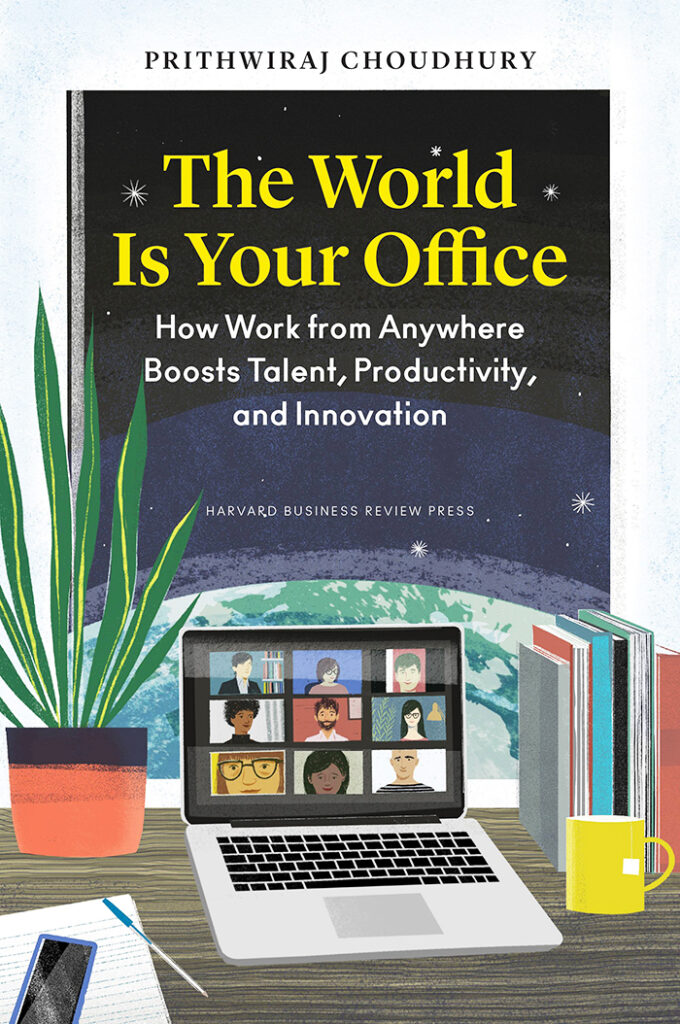c.2025, Harvard Business Review
$32.00
208 pages
By Terri Schlichenmeyer
The Truth Contributor
Twenty-seven steps.
That’s how long your commute is now: you roll out of bed and stroll down the hall at whatever time you like, wearing what you want. Next month may be different, you haven’t decided yet because it won’t matter. As in The World is Your Office by Prithwiraj Choudhury, you left the nine-to-five grind somewhere in a concrete building years ago.
You don’t have to think hard to remember the beginning of the pandemic, and what it was like to quickly commandeer a corner of your bedroom to be your new workspace. That was then, this is now, and you’re not eager to see the whole return-to-office thing return as the default.
So what if it didn’t?
Says Choudhury, there’s another way to work that’s a “win-win-win” for everyone: Work from Anywhere (WFA), which frees up workers to do their jobs from literally any location with an internet connection.
Companies of any size can implement WFA practices, he says, and benefits are many.
For workers, WFA allows flexibility, quality of life and monetary savings. Commutes would be limited or eliminated, work attire restrictions would be nonexistent and flexibility for family or personal pursuits would be built-in. Communities would benefit by keeping talented citizens in their midst. Employers would no longer have any need for a formal workplace, which would eliminate mortgage or rent and the cost of office supplies. WFA also offers the opportunity to hire the best employees, no matter where they live.
Of course, there are disadvantages to WFA, but Choudhury assures readers that the benefits far outweigh the problems. Communication is key to making this work, and he suggests several ideas to keep it efficient.
Set up a virtual storehouse for employees to find instructions, meeting transcripts, handbooks, memos, and other information they may need. Hold virtual water-cooler sessions at random. Give established employees a chance to e-mentor new hires. Utilize digital twin technology and asychronous communication. Offer your employees yearly offsite retreats. Do it now, says Choudhury, and you may be at an advantage over the competition.
Does this all sound like a work-from-home model? Author Prithwiraj Choudhury assures his readers that it’s not. For employers who are willing to make adjustments – ones that may have been needed for years anyway – WFA might actually be better.
That’s intriguing, and so are the benefits and solutions that Choudhury lays out in The World Is Your Office. Readers will be especially interested in the thought that, with technological advances appearing seemingly every day, this new method of working may be possible in almost any industry. Using medicine and assembly lines as examples, Choudhury points out that robotics and talented, properly-trained employees can already accomplish many micro tasks remotely. The technology will only get better.
This is a great book for CEOs, business owners, and employees who are able to bend the ear of an influential C-suiter. If saving money, job satisfaction, and exciting new technology are things you need now, The World Is Your Office is a valid and welcome next step.

